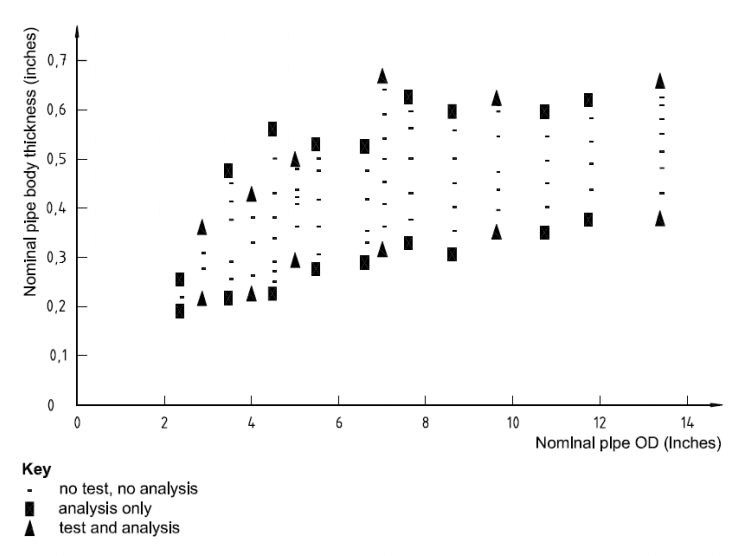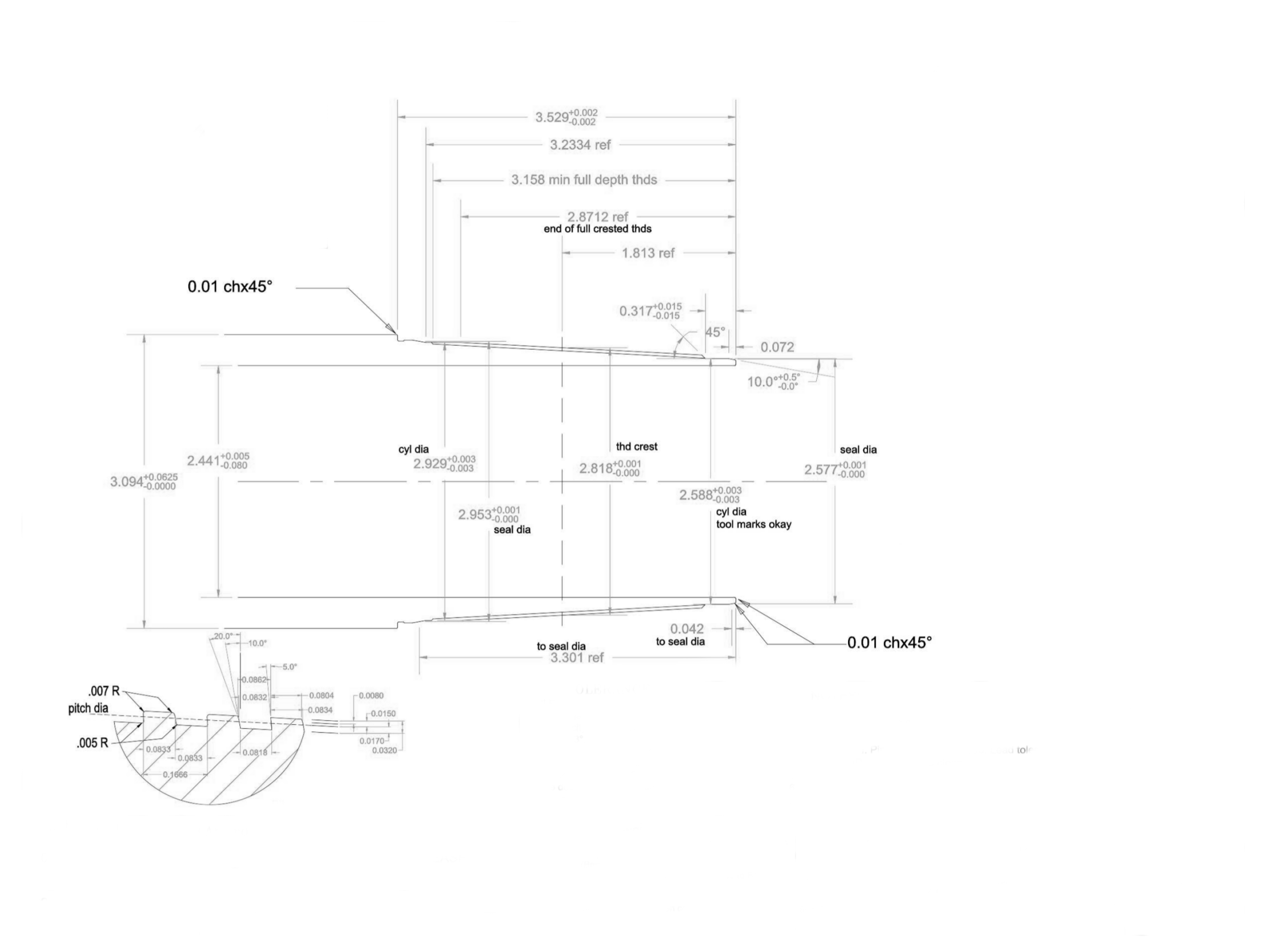ISO 13679/API RP 5C5Finite Element Analysis
Since connector tests are expensive, not all of the product line need be tested. Typically, the lightest and heaviest wall thickness for some pipe diameters will be tested and the rest of the product line will be assessed by analysis. We have analyzed many hundreds of connectors from dozens of OTG vendor's product lines over the years. We have developed an automated methodology that will generate the connector envelope for the series A, series B, and other load paths. The sealability is then assessed either using our proprietary algorithm or from our data by the client's sealability algorithm.


Geometry Tolerance analysis
The geometry is usually supplied by our client in a 2D format such as a DWG, DXF, or an IGES file. Sometimes the client provides us with modified geometry and the pin and the box pre-positioned. Usually, we modify the geometry and position the pin and the box such that the tolerance stack-up is least favorable for sealing.
We then create an axisymmetric finite element model with uniform, refined meshes in the vicinity of the seals, threads, and torque shoulders (if any). The loads are automatically generated for the desired testing program by programs developed by us.
ISO 13679/API RP 5C5Strength and sealability
Post-processing of the non-linear finite element results consists of evaluating the strength of the connector and the seal integrity for each step of the simulated test. Since we have performed so many connector evaluations over the years and have automated so much of the process, we can perform a connector assessment in less than a day.

